A human intestinal organoid derived from fetal human colon cells model for studying enteroviral pathogenesis
- PMID: 40745909
- PMCID: PMC12323420
- DOI: 10.1080/21505594.2025.2542455
A human intestinal organoid derived from fetal human colon cells model for studying enteroviral pathogenesis
Abstract
Human enteroviruses, including enterovirus 71 (EV71), cause hand, foot, and mouth disease (HFMD) and may lead to severe neurological diseases in infants. Enteroviruses first infect the gastrointestinal tract and then spread to the main organs, such as the liver, lungs, heart, and brain. Human intestinal organoids (HIOs) provide a physiologically relevant model for studying enterovirus infections. Unlike traditional two-dimensional (2D) monolayer cultures, HIOs maintain complex epithelial cell diversity and three-dimensional (3D) architecture, allowing for a more accurate representation of in vivo viral-host interactions. In this study, we developed efficient and stable HIOs based on fetal human primary colon cells using the 3D culture system. We discriminated cultured HIOs containing goblet, enteroendocrine, and Paneth cells, and examined the replication efficiency of enteroviruses in HIOs compared to 2D monolayer cultures. HIOs were infected with enteroviruses (EV71, coxsackievirus B3, echovirus 6), and viral replication was assessed using molecular and imaging techniques, which exhibit a higher level of dynamic viral replication in HIOs than in 2D culture. The replication level of enteroviruses increased about 10-fold in HIOs with the virus titre in HIOs was 5-10 times higher than that in 2D cell cultures (p < 0.05). Also, our findings demonstrate that goblet cells serve as a primary site of viral replication. This observation highlights the importance of cellular microenvironments in enteroviral infections and provides insights into gut-specific viral tropism. Collectively, we established an infection model with human intestinal organoids for enteroviruses, providing new opportunities into evaluating enterovirus-related antiviral drugs and modelling enterovirus-associated diseases.
Keywords: 3D culture; Enteroviruses; human intestinal organoids; infection modelling; viral replication.
Conflict of interest statement
No potential conflict of interest was reported by the author(s).
Figures

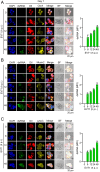
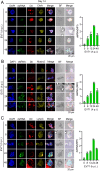
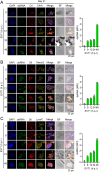
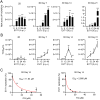
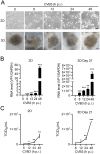
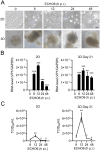
Similar articles
-
Enteroviral 3C protease cleaves N4BP1 to impair the host inflammatory response.J Virol. 2025 Jan 31;99(1):e0175824. doi: 10.1128/jvi.01758-24. Epub 2024 Dec 10. J Virol. 2025. PMID: 39655957 Free PMC article.
-
Decoding the role of the intestinal epithelium in hepatitis E virus infection using a human organoid prototype of "gut-liver" axis.Virology. 2025 Sep;610:110615. doi: 10.1016/j.virol.2025.110615. Epub 2025 Jun 27. Virology. 2025. PMID: 40596796
-
Platelet factor 4-derived C15 peptide broadly inhibits enteroviruses by disrupting viral attachment.J Virol. 2025 Jan 31;99(1):e0185924. doi: 10.1128/jvi.01859-24. Epub 2025 Jan 8. J Virol. 2025. PMID: 39772852 Free PMC article.
-
The application and discovery of animal models in enterovirus research.Arch Virol. 2025 Jul 8;170(8):175. doi: 10.1007/s00705-025-06367-6. Arch Virol. 2025. PMID: 40629191 Review.
-
Systemic treatments for metastatic cutaneous melanoma.Cochrane Database Syst Rev. 2018 Feb 6;2(2):CD011123. doi: 10.1002/14651858.CD011123.pub2. Cochrane Database Syst Rev. 2018. PMID: 29405038 Free PMC article.
References
Publication types
MeSH terms
Associated data
LinkOut - more resources
Full Text Sources
